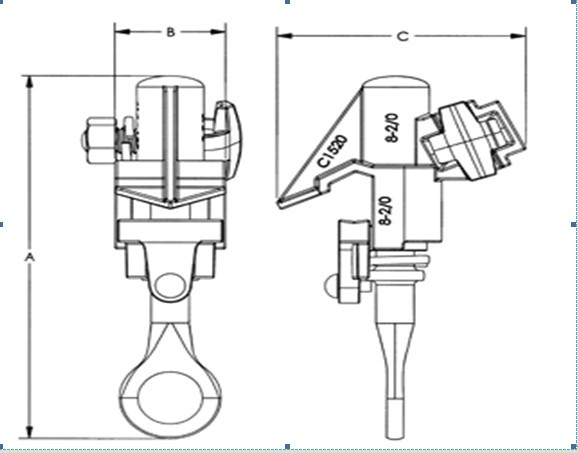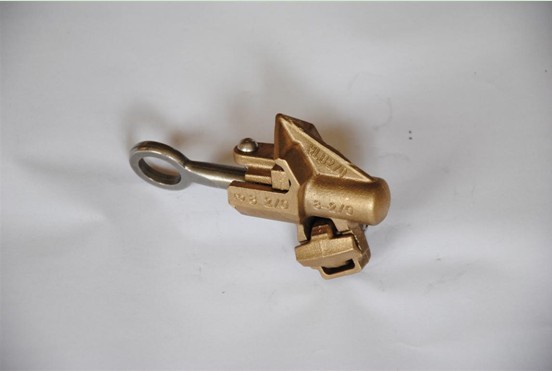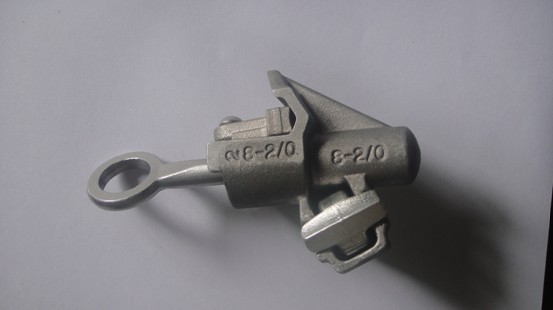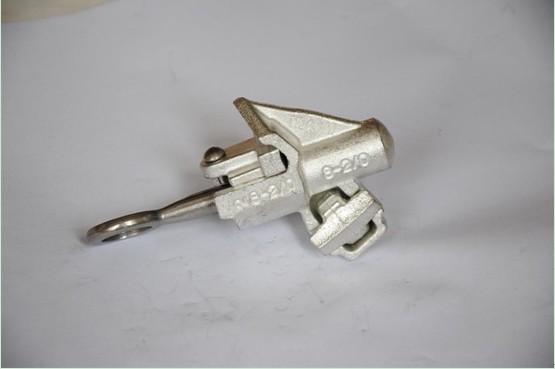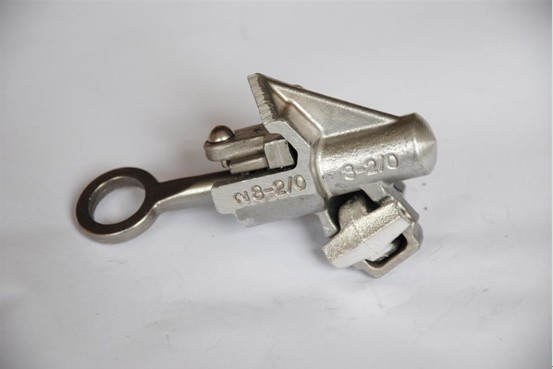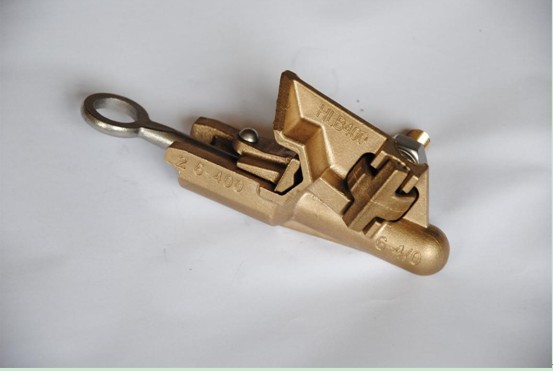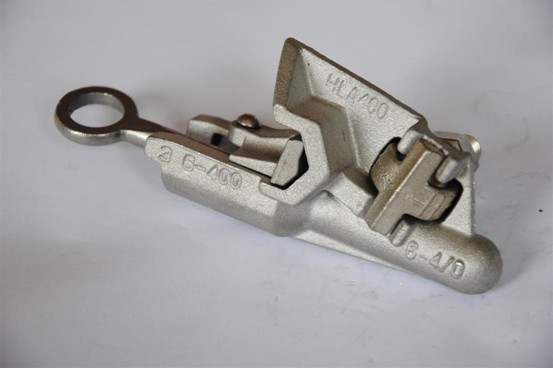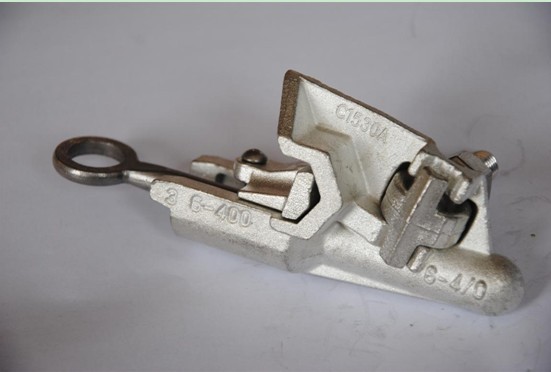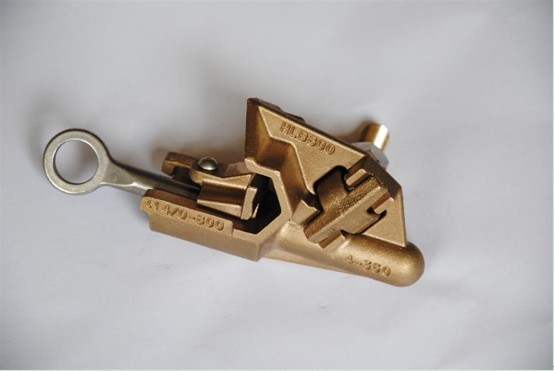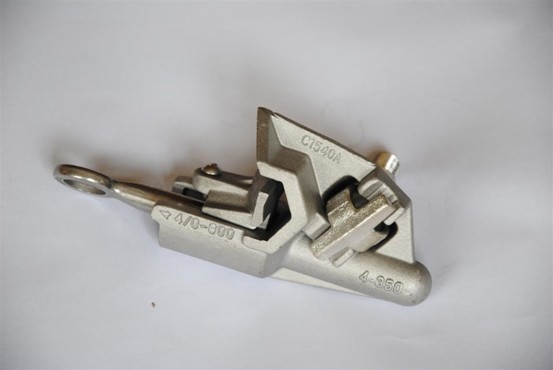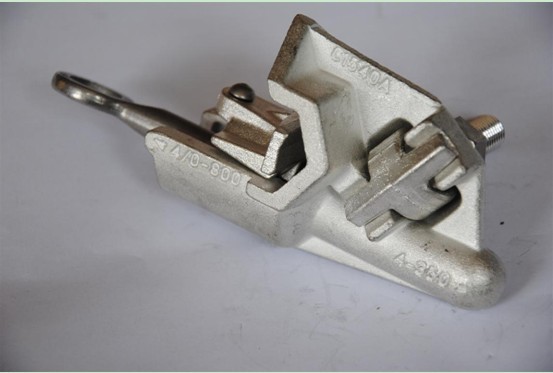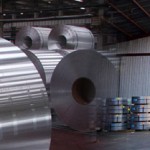News
mirachmetallurgy.com provides the latest intustrial news of Chinese Tinplate Exporter, Aluminium Manufacturer, Stainless Steel Bar Supplier market, LME SME price information update!
Tinplate use in badge products
The topic of this entry is about Tinplate use in badge products. In the following part, we will discuss the detail.
Badge product is made of imported tinplate.Coated paper, paper printing patterns are provided by the customers. The back of it can choose either the plastic bottom or iron bottom. Tinplate badge Optional accessories is pin. A variety of size specifications are available, which can be widely used in promotion of food, nutrition, electronics products, because this product is inexpensive and attractive appearance, so it is favored by customers.
The Development of Tinplate Industry
In the topic, we discuss the history and development of Tinplate Industry.
In 17th century, Britain, France, Sweden had hoped to establish their own tinplate manufacturing industry. Due to the need of large amount of money,they delay the development of tinplate manufacturing industry.In 1811, Brian Tang and John Hall began to produce tinplate canned food, then tinplate manufacturing began to develop rapidly. In nowadays, worldwide annual production of tin reaches about 25 million tons, in which more than one-third of tinplate is used to produce tinplate, and most of which is for the canned food industry.
Tinplate originated in Bohemia
Tinplate originated in Bohemia (located in the Czech Republic and Slovakia). Since ancient times, people there acquire the advanced metal technology and knowledge of how to use hydraulic in machinery manufacturing. From the 14th century, people there began to produce tinplate. For a long period, Bohemia has been a major producer of tinplate in the world. Then tinplate is mainly used to manufacture tableware and drink ware. From World War I, tinplate is used as iron containers (canned) by different countries.
Tinplate’s long history in China
Tinplate‘s surface is coated with a layer of tin tin, so it is not easy to rust, which is known as tinned iron.For a long time Coated steel in China is called tinplate. It is said that the tin plate for manufacturing cans are imported from Macau (English names Macao as tinplate), so it is called” tinplate”. Another saying is that in the past Chinese manufactured kerosene lamp with this tin plate, which shaped like horses mouth, so it is called “tinplate”. In fact, ‘tinplate” is inaccurate. Therefore, in Chinese tin plate Conference in 1973, horse mouth steel is renamed as tinplate.
Chinese Highquality Hot Line Clamp Wholesale
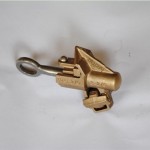
Application
Newest cast hot line clamp in aluminum or brass body,it can be used for connecting wire made of aluminum or brass.
Features
1. Clamps’ Bronze Alloy and Aluminum Alloy castings offer high strength,corrosion resistance,conductor compatibility
2. Extended jaw width means excellent conductor contact,reduced joint temperature minimal conductor cold flow.
3. Spring loaded feature compensates for cold flow and offsets tightening torque vibrations.
|
Catalog Number |
Connection Type Run |
Connection Type Tap |
Run Dia. |
Run |
Tap Dia. |
Tap |
A |
B |
C |
Tap Nut |
Standard Pack |
|
|
C1520 |
CU |
CU |
0.128″-0.414″ |
#8 sol-2/0 str |
0.128″-0.414″ |
#8 sol-2/0 str |
4.50 |
1.25 |
2.75 |
9\16 |
25 |
|
|
C1520P |
CU |
CU |
0.128″-0.414″ |
#8 sol-2/0 str |
0.128″-0.414″ |
#8 sol-2/0 str |
4.50 |
1.25 |
2.75 |
9\16 |
25 |
|
|
C1520A |
AL |
AL |
0.128″-0.414″ |
#8 sol-2/0 str |
0.128″-0.414″ |
#8 sol-2/0 str |
4.50 |
4.50 |
2.75 |
9\16 |
25 |
|
|
C1520AP |
AL |
AL |
0.128″-0.414″ |
#8 sol-2/0 str |
0.128″-0.414″ |
#8 sol-2/0 str |
4.50 |
4.50 |
2.75 |
9\16 |
25 |
|
|
C1530 |
CU |
CU |
0.162″-0.745″ |
#6 sol-400MCM |
0.152″-0.682″ |
#6 sol-4/0 str |
6.50 |
1.75 |
2.50 |
3\4 |
25 |
|
|
C1530P |
CU |
CU |
0.162″-0.745″ |
#6 sol-400MCM |
0.152″-0.682″ |
#6 sol-4/0 str |
6.50 |
1.75 |
2.50 |
3\4 |
25 |
|
|
C1530A |
AL |
AL |
0.162″-0.745″ |
#6 ACSR-336.4MCM |
0.152″-0.682″ |
#6 sol-4/0 str |
6.50 |
1.75 |
2.50 |
3\4 |
25 |
|
|
C1530AP |
AL |
AL |
0.162″-0.745″ |
#6 ACSR-336.4MCM |
0.152″-0.682″ |
#6 sol-4/0 str |
6.50 |
1.75 |
2.50 |
3\4 |
25 |
|
|
C1540 |
CU |
CU |
0.502″-1.031″ |
4/0 ACSR-800MCM |
0.198″-0.703″ |
#4 sol-350MCM |
6.50 |
2.00 |
3.00 |
3\4 |
25 |
|
|
C1540P |
CU |
CU |
0.502″-1.031″ |
4/0 ACSR-800MCM |
0.198″-0.703″ |
#4 sol-350MCM |
6.50 |
2.00 |
3.00 |
3\4 |
25 |
|
|
C1540A |
AL |
AL |
0.502″-1.031″ |
4/0 ACSR-800MCM |
0.198″-0.703″ |
#4 sol-350MCM |
6.50 |
2.00 |
3.00 |
3\4 |
25 |
|
|
C1540AP |
AL |
AL |
0.502″-1.031″ |
4/0 ACSR-800MCM |
0.198″-0.703″ |
#4 sol-350MCM |
6.50 |
2.00 |
3.00 |
3\4 |
25 |
|
Reliable Packaging Tin Products Suppliers
In this blog entry, the author collects three reliable Packaging Tin Products Suppliers from China. If you are looking for high quality tinplate products suppliers.
Mirach Metallurgy Co.,Limited is a professional distributor specializing in steel and aluminium business for more than a decade, including stainless steel bar and sheet, tinplate, cold rolled, and wrought aluminium coil alloy products from 1000 to 8000 series.
Incepted in the year 1984, Aruns Housing Remedies Ltd. has unceasingly grown as Packaging Tin Manufacturers and Wholesale Tin Containers Traders of India. Our eternal experience and devoted team of skilled personnels are the base of our hard earned success.
Timeless Tins Ltd. minimum custom tin packaging quantities start at just 5000 pieces and we can deliver (practically) anywhere in the world. We are a leading importer of custom tin packaging into the USA, Canada and numerous other countries.
Job Opportunities – Aluminium Coil Sales Representative (1)

Recruit in 2012, Spring
Sales Representative for Aluminium Coil: 1 (Working Location: Chongqing)
Requirements:
1. Bachelor degree or above. English Major or foreign trade background.
2. 2 years or above working experience preferred, fresh graduates can be considered.
3. CET-6/TEM-4 or above English Level, excellent command of English communication.
4. Be capable working under pressure.
Mirach will provide sufficient training and promotion mechanism, and we are expecting our new staff.
Tinplate Introduction
Tinplate is sheet covered with a thin layer of tin. Before the advent of cheap mild steel the backing metal was iron. While once more widely used, the primary use of tinplate now is the manufacture of tin cans.
Tinplate is made by rolling the steel(or formerly iron) in a rolling mill, removing any scale (rust) by pickling it in acid and then coating it with a thin layer of tin. Plates were once produced individually (or in small groups) in what became known as a pack mill. In the late 1920s pack mills began to be replaced by strip mills which produced larger quantities more economically.
Formerly, tinplate was used for cheap pots, pans and other hollowware. This kind of hollowware was also known as tinware and the people who made it were tinplate workers.
For many purposes, tinplate has been replaced by galvanized (zinc-coated) vessels, though not for cooking as zinc is poisonous. Zinc protects iron electrolytically, that is, the zinc will oxidize and turn to a white powder to preserve the iron, whereas tin will only protect the iron if the tin-surface remains unbroken. This is why it is not safe to eat food from a rusty tin can.
The History of Tinplate
The practice of tinning ironware to protect it against rust is an ancient one. This may have been the work of the whitesmith. This was done after the article was fabricated, whereas tinplate was tinned before fabrication. Tinplate was apparently produced in the 1620s at a mill of (or under the patronage of) the Earl of Southampton, but it is not clear how long this continued.
The first production of tinplate was probably in Bohemia, form where the trade spread to Saxony, and was well-established there by the 1660s. Andrew Yarranton and Ambrose Crowley (a Stourbridge blacksmith and father of the more famous Sir Ambrose) visited Dresden in 1667 and found out how it was made. In doing so, they were sponsored by various local ironmasters and people connected with the project to make the river Stour navigable. In Saxony, the plates were forged, but when they conducted experiments on their return to England, they tired rolling the iron. This led to the ironmasters Philip Foley and Joshua Newborough (two of the sponsors) in1670 erecting a new mill, Wolverley Lower Mill (or forge). This contained three shops, one being a slitting mill (which would serve as a rolling mill), and the others were forges. In 1678 one of these was making frying pans and the other drawing out blooms made in finery forges elsewhere. It is likely that the intention was to roll the plates and then finish them under a hammer, but the plan was frustrated by one William Chamberlaine renewing a patent granted to him and Dud Dudley in 1662.
The slitter at Wolverley was Thomas Cooke. Another Thomas Cooke, perhaps his son, moved to Pontypool and worked there for John Hanbury. He had a slitting mill there and was also producing iron plates called“Pontpoole plates”. Edward Lhuyd reported the existence of this mill in 1697. This has been claimed as a tinplate works, but it was almost certainly only producing (untinned) blackplate.
Tinplate first begins to appear in the Gloucester Port Books which record trade passing through Gloucester, mostly from ports in the Bristol Channel in 1725. The tinplate was shipped from Newport, Monmouthshire. This immediately follows the first appearance in French of Reamur’s Principes del’art de fer-blanc, and prior to a report of it being published in England.
Further mills followed a few years later, initially in many ironmaking regions in England and Wales, but later mainly in south Wales. In 1805, 80,000 boxes were made and 50,000 exported. The industry continued to grow until 1891. One of the greatest markets was the United States of America, but that market was cut off in 1891, when the McKinley tariff was enacted there. This caused a great retrenchment in the British industry and the emigration to America of many of those who could no longer be employed in the surviving tinplate works.
Despite this blow, the industry continued, but on a smaller scale. Nevertheless there were still 518 mills in operation in 1937, including 224 belonging to Richard Thomas & Co. However the traditional pack mill had been overtaken by the improved strip mill, of which the first in Great Britain was built by Richard Thomas & Co. in the late 1930s. Strip mills rendered the old pack mills obsolete and the last of them closed in about the 1960s.
The Strip Mill
The strip mill was a major innovation, with the first being erected at Ashland, Kentucky in 1923. This provided a continuous process, cutting out the need to pass the plates over the rolls and to double them. At the end the strip was cut with a guillotine shear or rolled into a coil. Early (hot rolling) strip mills did not produce strip suitable for tinplate, but in 1929 cold rolling began to be used reduce the gauge further. The first strip mill in Great Britain was opened at Ebbw Vale in 1983 with an annual output of 200,000 tons.
The strip mill had several advantages over pack mills:
It was cheaper due to having all parts of the process, starting with blast furnaces on the same site.
Softer steel could be used.
Larger sheets could be produced at lower cost and this reduced cost and enabled tinplate and steel sheet to be used for more purposes.
It was capital intensive, rather than labour intensive.
The Pack Mill Process
The raw material was bar iron, or(from the introduction of mild steel in the late 19th century), a bar of steel. This was drawn into a flat bar (known as a tin bar) at the ironworks or steel works where it was made. The cross-section of the bar needed to be accurate in size as this would be the cross-section of the pack of plates made form it. The bar was cut to the correct length (being the width of the plates) and heated. It was then passed four or five times through the rolls of the rolling mill, to produce a thick plate about 30inches long. Between each pass the plate is passed over (or round) the rolls, and the gap between the rolls is narrowed by means of a screw.
This was then rolled until it had doubled in length. The plate was the folded in half using a doubling shear, which was like a table where one half of the surface folds over on top of the other. It is then put into a furnace to be heated until is is well soaked. This is repeated until there is a pack of 8 or 16 plates. The pack is then allowed to cool. When cool, the pack was sheared (suing powered shears) and the plates separated by openers (usually women). Defective plates were discarded, and the rest passed to the pickling department.
In the pickling department, the plates were immersed in baths of acid (to remove scale-i.e.oxide), then in water (washing them). After inspection they were placed in an annealing furnace, where they were heated for 10-14 hours. This was known as black pickling and black annealing. After being remove they were allowed to cool for up to 48 hours. The plates were then rolled cold through highly polished rolls to remove any unevenness and give them a sense polished surface. They were then annealed again(but at a lower temperature) and pickled again, this being known as white annealing and white pickling. They were then washed and stored in slightly acid water(where they would not rust) awaiting tinning.
The tinning set consisted of two pots with molten tin (with flux on top) and a grease pot. The flux dries the plate and prepares it for the tin to adhere. The second tin pot (called the wash pot) had tin at a lower temperature. This is followed by the grease pot(containing and oil) and removes the excess tin. Then follow cleaning and polishing processes. Finally, the tinplates were packed in boxes of 112 sheets ready for sale. Single plates were 14 inches by 20 inches, doubles twice that. A box weighed approximately a hundredweight.
What is described here is the process as employed during the 20th century. The process grew somewhat in complexity with the passage of time, as gradually it was found that the inclusion of additional procedures improved quality. However the practice of hot rolling and then cold rolling evidently goes back to the early days, as the Knight family’s tinplate works had (from its foundation in about 1740) two rolling mills, one at Bringewood (west of Ludlow) which made blackplate, and the other the tin mill at Mitton (now part of Stourport, evidently for the later stages) and is like a big water tank.
Tinplate of hardness detection
1. tin tin is plated with a layer of tin metal, it is not easy to rust, also known as tin-plated iron. The iron plates dipped into the molten liquid tin obtained. Tin is a reactive metal than iron, neither oxidized by air without reacting with water, so there are very strong corrosion resistance. The iron plates coated a thin layer of tin can be a good protection.Coating once destroyed electrochemical corrosion occurs because iron is more lively than tin, iron will as the original battery’s negative oxidation loss, the presence of tin will accelerate the corrosion rate of iron, tin and tin, it can onlyonly in the case of coating intact to protect the role of iron.
Tin was first produced in Bohemia (now Czech Republic and in Slovakia). The land since ancient times rich metal, advanced technology, and understand the use of water in the machine building, from the 14th century began to produce tinplate. In a very long period of time, there has been a major producer of tin in the world. Tin is mainly used to make cutlery and drinking utensils.
In the 17th century, Britain, France, Sweden, had hoped to build their own tinplate industry, due to the need of large sums of money, so the delay has not been development. Until 1811, Brian Tang gold and John Hall opened the tin canned food, tinplate manufacture to large-scale development. Now the world annual production of tin is about 25 million tons, more than 1/3 used to make tinplate, most of them for the canned food industry.
2. Tinplate of hardness testing, hardness testing in the past most of the desktop surface Rockwell hardness tester, using ordinary steel anvil, the test HR30T hardness.
In recent years, due to the national standard GB/T2520-2000 tinplate began to use the international generic HR30Tm hardness representation, the country has adopted the diamond anvil test tinplate of the HR30Tm hardness value.
However, test HR30Tm hardness of a diamond anvil made Rockwell hardness few such accessories can buy. Is difficult to buy the right diamond anvil desktop surface hardness and more expensive. The hardness HR30Tm line is not common in the domestic tinplate industry. In particular, the hardness is very important in the use of the tinplate manufacturers is also intended to total knowledge to the tin, it relates to the processing quality of the product, related to the productivity and enterprise efficiency. However, most enterprises have not purchased tinplate material hardness re-examination.
Aluminum Association Appoints New Vice Chairman
The Aluminum Association has appointed Layle K (Kip) Smith, President and CEO of Noranda Aluminum Holding Company to serve as Vice-Chairman of the Aluminum Association.
Smith became President and CEO of Noranda in March 2008. In addition to his time with Noranda, Kip began his career in 1977 at The Dow Chemical Company and has held various management positions including international and business leadership positions at The Dow Chemical Company.
“Kip has broad expertise concerning commodity and energy issues critical to the success of the Aluminum Association,” said Heidi Brock, President of the Aluminum Association. “He will be an asset to the Association over his tenure and I look forward to working with him more in his new capacity as Vice-Chairman.”
Smith currently serves on the Association’s Board of Directors and Executive Committee. As Vice-Chairman, Smith will also chair the Association’s Strategic Planning Committee. He lives on Lummi Island in Washington State.
Smith said: “I am honoured to be elected to the Vice-Chairmanship of the Aluminum Association. The work of the AluminumAssociation is vital to the long-term success and growth of the US aluminum industry.
“I am especially excited to be joining the Association as it begins a new phase of communications on the sustainable nature of aluminum following the technical Sustainability Report released last September.”
How to Choose a Stainless Steel Grade?
2205
Principal Design Features: 2205 is a duplex stainless steel designed to combine improved resistance to stress corrosion cracking, pitting, crevice corrosion and high strength when compared with other stainless alloys. This alloy resists chloride environments and sulfide stress corrosion. It is also roughly double the strength of standard austenitic stainless steels.
Applications: Most often employed in welded pipe and tube in chemical tanks, flue gas filters, acetic acid distillation components and heat exchangers.
Machinability: Similar in nature to 316 stainless steel. Slow speeds, positive feeds, sharp tooling and rigid mounts are essential. Machinable with either high speed or carbide tooling, with speeds for carbide reduced by roughly 20 %.
Forming: Due to its inherently high strength and work hardening rate, 2205 is difficult to form. It will take a lower radius than 316 stainless and a higher allowance must be made for springback.
Welding: TIG, MIG, SMAW and manual covered electrode methods have been successfully employed. Use caution in the following areas : 1.) Do not preheat the weld piece. 2.) use low heat inputs and 3.) Cool below 300 F between passes.
Hot Working: Hot work should be done in the range of 1750-2100 F, although room temperature forming is recommended whenever possible. When any hot forming is performed, a full anneal with rapid quench is required to retain maximum stability and properties.
Annealing: Anneal at 1868-1958 F(1020-1070 C), water quench
2304
Principal Design Features: This alloy is a duplex stainless steel whose structure is a balance of ferritic and austenitic. It was designed to feature high strength and toughness, resistance to stress corrosion cracking, low thermal expansion, high thermal conductivity and easy fabrication. This alloy is not designed for applications which expose it to temperatures over 570 F for long periods.
Applications: Heat exchangers, feed water tubes, piping and instrumentation tubing for general service. Industries utilizing this alloy include the coal handling, food and beverage, potash, waste water and pulp and paper.
Machinability: Low speeds and constant feeds will minimize this alloy’s tendency to work harden. Tougher than 304 and 316 stainless with a long stringy chip, the use of chip breakers is recommended.
Forming: Due its inherently higher yield strength, initial forming pressures must be higher than those required for standard 300 series stainless steel. Low ductility will make forming operations difficult.
Welding: All common methods including GTAW, SAW and GMAW can be successfully employed. Preheating and post weld annealing is not required. Filler metal should be a balanced ferrite/ austenite type like 2205 or 2304.
Hot Working:This is the recommended method of forming. It may commence after heating to 1750-2000 F, followed by rapid cooling after working. For maximum properties material should be fully annealed after working.
Annealing: Heat to 1710-1920 F(930-1050 c), rapid quench.
Hardening: This material is not hardenable by heat treatment.
2507
Principal Design Features: This is a duplex alloy stainless steel designed to feature high strength, resistance to pitting, stress corrosion cracking, erosion corrosion and corrosion fatigue, crevice corrosion and strong weldability.
Applications: Applications include components exposed to strong chloride rich environments. Among them are a variety of components in desalination plants, heat exchanger tubes in sea water cooling plants, drive shafts for ocean going vessels, containers for the pulp and paper industry, tube and pipe systems at petrochemical refineries and human implant components.
Machinability: Low speeds and constant feeds will minimize this alloy’s tendency to work harden. Tougher than 304 and 316 stainless with a long stringy chip, the use of chip breakers is recommended.
Forming: Due its inherently higher yield strength, initial forming pressures must be higher than those required for standard 300 series stainless steel. Low ductility will make forming operations difficult.
Welding: All common methods including GTAW, SAW and GMAW can be successfully employed. Preheating and post weld annealing is not required. Filler metal should be a balanced ferrite/ austenite type like 2205, 2507 or 2304.
Hot Working: This is the recommended method of forming. It may commence after heating to 1750-2000 F, followed by rapid cooling after working. For maximum properties material should be fully annealed after working.
Annealing: Heat to 1920-2060 F(1050-1125 C), rapid quench.
Hardening: This material is not hardenable by heat treatment.
301
Principal Design Features: 301 is a commonly available austenitic stainless with good corrosion resistance and elevated carbon to allow for cold working to a variety of tempers. It can be obtained in the annealed, 1/4 hard, 1/2 hard, 3/4 hard, full hard, extra full hard and high yield tempers from both producers and distributors.
Applications: Automotive trim, kitchen equipment, hose clamps, wheel covers, aircraft components and a wide variety of industrial applications.
Machinability: 301 is not available in bar, plate, tube, pipe or forging, therefore no information is available.
Forming: Easily formed in the annealed condition. Care must be taken in forming operations which involve deforming the material in the tempered condition as cracking and tearing can result. Intermediate annealing only serves to reduce the hardness and therefore ultimate properties.
Welding: All popular techniques may be used, however the material will lose temper in the heat affected weld zone.
Forging: Commence forging at 2000-2200 F(1093-1204 C) and finish at 1700 F(927 C).
Hot Working: While cold forming is recommended wherever feasible, forging, upsetting and other operations can be performed at 1800-2100 F. Temperatures above this range will cause scaling and a reduction in the workability of the material. Post-process annealing is required to re-attain maximum corrosion resistant properties.
Cold Working: Most common cold work methods are successful with this alloy. It should be understood however that the material will be more difficult to work than other austenitic stainless steels due its high work hardening rate. The resulting hardening will, however, produce increases in strength and toughness which may be of value in the finished product.
Annealing: 1850-2050 F (101-1121 C) followed by rapid cooling. For thin sections air cooling is acceptable, while heavier sections should be water quenched.
Hardening: This alloy does not respond to heat treatment.
302
Principal Design Features: Type 302 is a slightly higher carbon version of type 304, most commonly found in strip and wire forms. While still used in a variety of industries, many applications have shifted to 304 and 304L due to advances in melting technology, availability and cost.
Applications: Primarily used in the stamping, spinning and wire forming industry. This alloy is formed into all types of washers, springs, screens and cables.
Machinability: Slow speeds and high feeds will overcome this alloys tendency to work harden. Due to gummy chips, it is recommended that chip breakers are used on all tooling.
Welding: This alloy can best be welded by resistance or shielded fusion methods. Filler metals should be AWS E/ER308 or 312. Post weld annealing dissolves the chromium carbide and is recommended for maximum resistance to intergranular attack.
Forging: Commence forging at 2100-2300 F(1149-1260 C). Do not forge below 1700 F(927 C).
Hot Working: Uniform heating to 2100 F(1149 C) will allow this allow to be forged, upset and headed successfully. Do not work 302 below 1700 F (927 C). Forgings should be fully annealed after all operations to reattain maximum corrosion resistance.
Cold Working: Cold working will dramatically increase the hardness of this material, however it is quite ductile and may readily be drawn, spun and upset. Any cold work will cause this alloy to become magnetic. Post-fabrication annealing is necessary to reattain maximum corrosion resistance and a non-magnetic condition.
Annealing: 1850-2050 F (1010-1121 C) with cooling at a rapid rate to avoid the precipitation of chromium carbides.
Hardening: This alloy does not respond to heat treatment.
303
Principal Design Features: 303 is one of the most popular of all the free machining stainless steels. It offers good strength, corrosion resistance and great machinability. It will resist scaling at temperatures up to 1600 F(871 C).
Applications: sed in an incredibly wide variety of parts both in screw and general machining industries. Applications include hardware, fasteners, valve parts, nozzles and trim.
Machinability: Excellent speeds and feeds are capable with this material. The addition of sulfur causes a very brittle chip. Many companies now offer premium machinability grades, such as CarTech with their Project 70 and 7000 series.
Welding: Although not recommended, welding may be performed if low temperatures are employed. Recommended filler metal is AWS E/ER312. At high temperature, the sulfur in 303 tends to precipitate at the weld boundary resulting in weak and brittle joints.
Hot Working: Forging and upsetting may commence once the workpiece has been thoroughly heated to 2100-2300 F (1149-1260 C). It is not recommended to work this material below 1700 F (927 C). Rapid post-work cooling will optimize corrosion performance.
Cold Working: Minor deformation is possible with this alloy, although it is not its strong point. Type 303 Se is superior in this aspect.
Annealing: 1850-1950 F (1010-1066 C), followed by rapid cooling is the recommended practice.
Hardening: This alloy does not respond to hardening by heat treatment. Cold work will raise both the hardness and strength characteristics
304
Principal Design Features: One of the most widely used and oldest of the stainless steels. This was originally called 18-8 which stood for its chromium and nickel content. It possesses an excellent combination of strength, corrosion resistance and fabricability. It is available in the widest variety of forms and sizes of any stainless steel.
Applications: The list is endless. Almost every conceivable industry uses some of this material in some way. Everything from stovetops to ball point pen barrels to flatware to fasteners has been fabricated from this alloy.
Machinability: Slow speeds and heavy feeds will minimize this alloys tendency to work harden. Due to long stringy chips, the use of chip breakers is advisable. Many companies now offer premium machinability grades, such as CarTech with their Project 70 and 7000 series.
Welding: All fusion and resistance processes have been successfully employed in welding 304. AWS E/ER308 or 312 filler metal is recommended. For cleaner, stronger welds, may users choose 304L which has a controlled low carbon content designed to reduce carbide precipitation at the weld boundaries.
Hot Working: Forging, heading and other hot working should follow uniform heating to 2100-2300 F (1149-1260 C). Rapid cooling is necessary to attain maximum corrosion resistance in finished parts.
Cold Working: Readily fabricated by most cold working methods, 304 may require intermediate annealing to avoid cracking or tearing from radical deformation. Full annealing should follow any operation to reduce internal stress and optimize corrosion resistance.
Annealing: 1850-2050 F (1010-1121 C) followed by rapid cooling.
Hardening This alloy does not respond to heat treatment. Cold work will cause an increase in both hardness and strength.
304L
Principal Design Features A low carbon version of type 304 stainless. 304L is used almost interchangeably with 304 but is preferred for welding operations. It offers a good combination of strength, corrosion resistance and fabricability.
Applications The list is endless. Almost every conceivable industry uses some of this material in some way. Everything from stovetops to ball point pen barrels to flatware to fasteners has been fabricated from this alloy.
Machinability Slow speeds and heavy feeds will minimize this alloys tendency to work harden. Due to long stringy chips, the use of chip breakers is advisable. Many companies now offer premium machinability grades, such as CarTech with their Project 70 and 7000 series.
Welding All fusion and resistance processes have been successfully employed in welding 304. AWS E/ER308 or 312 filler metal is recommended. Its low carbon, means that the is less carbide precipitation at the weld boundaries resulting in stronger welds.
Hot Working Forging, heading and other hot working should follow uniform heating to 2100-2300 F (1149-1260 C). Rapid cooling is necessary to attain maximum corrosion resistance in finished parts.
Cold Working Readily fabricated by most cold working methods, 304L may require intermediate annealing to avoid cracking or tearing from radical deformation. Full annealing should follow any operation to reduce internal stress and optimize corrosion resistance.
Annealing 1850-2050 F (1010-1121 C) followed by rapid cooling.
Hardening This alloy does not respond to heat treatment. Cold work will cause an increase in both hardness and strength.
309
Principal Design Features This alloy is known for good strength and oxidation resistance in continuous service temperatures up to 2000 F (1093 C).It is superior to 304 stainless in both strength and corrosion resistance.
Applications Oven linings, boiler baffles, fire box sheets, furnace components and other high temperature containers.
Machinability This alloy machines similarly to type 304 stainless. Its chips are stringy and it will work harden rapidly. It is necessary to keep the tool cutting at all times and use chip breakers.
Welding Most of the austenitic stainless steels can be readily welded using fusion or resistance methods. Oxyacetylene welding is not recommended. Filler metal should be AWS E/ER 309 or 309L.
Hot Working Working temperatures are 2150 F (1177 C), with reheating necessary at 1800 F (982 C).Rapid quenching is recommended. Full post-work annealing is required to reattain maximum corrosion resistance.
Cold Working Although this alloy has a high work hardening rate, it can be drawn, headed, upset, and stamped. Full annealing is required after cold work to remove internal stress.
Annealing 1900-2050 F (1038-1121 C), water quench.
Hardening This alloy does not respond to heat treatment. Cold work will cause an increase in both hardness and strength.
309S
Principal Design Features Basically a controlled carbon version of type 309 stainless designed to improve the weld strength of the alloy while benefiting from the alloy’s high resistance to heat and corrosion. Superior corrosion resistance to 309 in the range of 800-1500 F (427-816 C).
Applications Oven linings, boiler baffles, fire box sheets, furnace components and other high temperature containers.
Machinability This alloy machines similarly to type 304 stainless. Its chips are stringy and it will work harden rapidly. It is necessary to keep the tool cutting at all times and use chip breakers.
Welding Most of the austenitic stainless steels can be readily welded using fusion or resistance methods. Oxyacetylene welding is not recommended. Filler metal should be AWS E/ER 309L.
Hot Working Working temperatures are 2150 F (1177 C), with reheating necessary at 1800 F (982 C). Rapid quenching is recommended. Full post-work annealing is required to reattain maximum corrosion resistance.
Cold Working Although this alloy has a high work hardening rate, it can be drawn, headed, upset, and stamped. Full annealing is required after cold work to remove internal stress.
Annealing 1900-2050 F (1038-1121 C), water quench.
Hardening This alloy does not respond to heat treatment. Cold work will cause an increase in both hardness and strength.
310
Principal Design Features The strength of this alloy is a combination of good strength and corrosion resistance in temperatures up to 2100 F (1149 C). Due to its relatively high chromium and nickel content it is superior in most environments to 304 or 309 stainless.
Applications Oven linings, boiler baffles, kilns, lead pots, radiant tubes, annealing covers, saggers, burners, combustion tubes, refractory anchor bolts, fire box sheets, furnace components and other high temperature containers.
Machinability This alloy machines similarly to type 304 stainless. Its chips are stringy and it will work harden rapidly. It is necessary to keep the tool cutting at all times and use chip breakers.
Welding Most of the austenitic stainless steels can be readily welded using fusion or resistance methods. Oxyacetylene welding is not recommended. Filler metal should be AWS E/ER 310.
Hot Working Most common hot work methods can be successfully performed after uniform heating to 2150 F (1177 C). Do not forge below 1800 F (982 C). Rapid cooling is required to maximize corrosion resistance.
Cold Working Although this alloy has a high work hardening rate, it can be drawn, headed, upset, and stamped. Full annealing is required after cold work to remove internal stress.
Annealing 1900-2050 F (1038-1121 C) water quench.
310S
Principal Design Features The strength of this alloy is a combination of good strength and corrosion resistance in temperatures up to 2100 F (1149 C). Due to its relatively high chromium and nickel content it is superior in most environments to 304 or 309 stainless.
Applications Oven linings, boiler baffles, fire box sheets, furnace components and other high temperature containers.
Machinability This alloy machines similarly to type 304 stainless. Its chips are stringy and it will work harden rapidly. It is necessary to keep the tool cutting at all times and use chip breakers.
Welding Most of the austenitic stainless steels can be readily welded using fusion or resistance methods. Oxyacetylene welding is not recommended. Filler metal should be AWS E/ER 310.
Hot Working Most common hot work methods can be successfully performed after uniform heating to 2150 F (1177 C). Do not forge below 1800 F (982 C). Rapid cooling is required to maximize corrosion resistance.
Cold Working Although this alloy has a high work hardening rate, it can be drawn, headed, upset, and stamped. Full annealing is required after cold work to remove internal stress.
Annealing 1900-2050 F (1038-1121 C) water quench.
Hardening This alloy does not respond to heat treatment. Cold work will cause an increase in both hardness and strength.
316
Principal Design Features This austenitic stainless steel has an increased molybdenum content to increase its resistance to corrosion when compared to other 300 series alloys. It will resist scaling at temperatures up to 1600 F (871 C) and maintains good mechanical properties and creep strength at high temperatures.
Applications Widely used in industry, it was initially designed for paper mill machinery. It has been used in marine environments and a wide variety of general industrial components.
Machinability Low speeds and constant feeds will minimize this alloy’s tendency to work harden. Tougher than 304 stainless with a long stringy chip, the use of chip breakers is recommended. Many companies now offer premium machinability grades, such as CarTech with their Project 70 and 7000 series.
Welding All common fusion and resistance methods except oxyacetylene welding have proven successful. Use AWS E/ER316 or 316L filler metal for best results.
Hot Working All common hot working processes are possible with this alloy. Heat to 2100-2300 F (1149-1260 C). Avoid working this material below 1700 F (927 C). For optimum corrosion resistance, a post-work annealing is recommended.
Cold Working Shearing, stamping, heading and drawing can be successfully performed . To remove internal stresses, a post-work annealing is recommended.
Annealing 1850-2050 F (1010-1121 C), followed by rapid cooling.
Hardening This alloy does not respond to heat treatment. Cold work will cause an increase in both hardness and strength.
316L
Principal Design Features 316L is often substituted for 316 stainless due to its superior weldability with no appreciable difference in price or properties. It combines good availability in all forms and size ranges with great strength and corrosion resistance.
Applications Components used in marine environments and chemical equipment. Suitable for any application where 316 stainless is used and stronger welds are desirable.
Machinability Low speeds and constant feeds will minimize this alloy’s tendency to work harden. Tougher than 304 stainless with a long stringy chip, the use of chip breakers is recommended. Many companies now offer premium machinability grades, such as CarTech with their Project 70 and 7000 series.
Welding All common fusion and resistance methods except oxyacetylene welding have proven successful. Use AWS E/ER 316L filler metal for best results.
Hot Working All common hot working processes are possible with this alloy. Heat to 2100-2300 F (1149-1260 C). Avoid working this material below 1700 F (927 C). For optimum corrosion resistance, a post-work annealing is recommended.
Cold Working Shearing, stamping, heading and drawing can be successfully performed . To remove internal stresses, a post-work annealing is recommended.
Annealing 1850-2050 F (1010-1121 C), followed by rapid cooling.
Hardening This alloy does not respond to heat treatment. Cold work will cause an increase in both hardness and strength.
317
Principal Design Features 317 is a higher chromium, nickel and molybdenum version of 316 stainless designed principally for increased strength and corrosion resistance.
Applications Textile, pulp paper and chemical equipment, for corrosion resistance.
Machinability Low speeds and constant feeds will minimize this alloy’s tendency to work harden. Tougher than 304 stainless with a long stringy chip, the use of chip breakers is recommended.
Welding All common fusion and resistance methods except oxyacetylene welding have proven successful. Use AWS E/ER317 or 317L filler metal for best results.
Hot Working All common hot working processes are possible with this alloy. Heat to 2100-2300 F (1149-1260 C). Avoid working this material below 1700 F (927 C). For optimum corrosion resistance, a post-work annealing is recommended.
Cold Working Shearing, stamping, heading and drawing can be successfully performed . To remove internal stresses, a post-work annealing is recommended.
Annealing 1850-2050 F (1010-1121 C), followed by rapid cooling.
Hardening This alloy does not respond to heat treatment. Cold work will cause an increase in both hardness and strength.
317L
Principal Design Features 317L is a low carbon version of 317 stainless. It possesses the same high strength and corrosion resistance and will produce stronger welds due to its low carbon content. Many users are shifting over to this alloy in lieu of 304 and 316 as availability and cost improves.
Applications Chemical and petrochemical process equipment, pulp and paper manufacturing and condensers in fossil and nuclear fueled power generation stations.
Machinability Low speeds and constant feeds will minimize this alloy’s tendency to work harden. Tougher than 304 stainless with a long stringy chip, the use of chip breakers is recommended.
Welding All common fusion and resistance methods except oxyacetylene welding have proven successful. Use AWS E/ER 317L filler metal for best results.
Hot Working All common hot working processes are possible with this alloy. Heat to 2100-2300 F (1149-1260 C). Avoid working this material below 1700 F (927 C). For optimum corrosion resistance, a post-work annealing is recommended.
Cold Working Shearing, stamping, heading and drawing can be successfully performed . To remove internal stresses, a post-work annealing is recommended.
Annealing 1850-2050 F (1010-1121 C), followed by rapid cooling.
Hardening This alloy does not respond to heat treatment. Cold work will cause an increase in both hardness and strength.
321
Principal Design Features The key feature of 321 stainless is its resistance to intergranular corrosion. It employs titanium as a stabilizing element against chromium carbide formation. This alloy also exhibits strength characteristics superior to those of 304 stainless.
Applications Jet engine parts, furnace heat treated parts, expansion joints, turbo superchargers, oil refiners, exhaust manifolds and high temperature chemical production equipment.
Machinability Slightly tougher than 304 stainless, this material will produce the same tough stringy chips. The use of slow speeds and constant positive feeds will minimize this alloy’s tendency to work harden.
Welding 321 may be welded by all commonly used fusion and resistance methods. Oxyacetylene welding is not recommended. When necessary, use AWS E/ER347 filler metal.
Hot Working Working temperatures of 2100-2300 F (1149-1260 C) are recommended for forging, upsetting and other hot work processes. Do not work this alloy at temperatures below 1700 F ( 927 C). Material must be water quenched or fully annealed after working to reattain maximum corrosion resistance.
Cold Working Although this material requires higher initial forces than 304 stainless, it is quite tough and ductile and can be readily stamped, blanked, spun and drawn.
Annealing 1800-2000 F (928-1093 C), air cool. This procedure will result in maximum ductility. For maximum corrosion resistance, see the note on stabilizing anneal under corrosion.
Hardening This alloy does not harden by heat treating. Elevated properties may only be obtained through cold reduction
347
Principal Design Features Similar to 321 stainless, 347 uses columbium as a stabilizing element to maximize its principal feature: resistance to intergranular corrosion. It can be used in applications requiring repeated heating in the range of 800 and 1650 F (427-899 C).
Applications High temperature gaskets and expansion joints, rocket engine parts, aircraft collector rings and exhaust manifolds and chemical production equipment.
Machinability Slightly tougher than 304 stainless, this material will produce the same tough stringy chips. The use of slow speeds and constant positive feeds will minimize this alloy’s tendency to work harden.
Welding 347 may be welded by all commonly used fusion and resistance methods. Oxyacetylene welding is not recommended. When necessary, use AWS E/ER347 filler metal.
Hot Working Working temperatures of 2100-2250 F (1149-1232 C) are recommended for forging, upsetting and other hot work processes. Do not work this alloy at temperatures below 1700 F ( 927 C). Material must be water quenched or fully annealed after working to reattain maximum corrosion resistance.
Cold Working Although this material requires higher initial forces than 304 stainless, it is quite tough and ductile and can be readily stamped, blanked, spun and drawn.
Annealing 1850-2000 F (1010-1093 C), water quench. This procedure will result in maximum ductility. For maximum corrosion resistance, see the note on stabilizing anneal under corrosion.
Hardening This alloy does not harden by heat treating. Elevated properties may only be obtained through cold reduction
409
Principal Design Features 409 is an alloy designed principally for the automotive exhaust industry, although it has been used successfully in other industrial applications. It combines good elevated temperature corrosion resistance with medium strength, good formability and overall cost. In recent years, however, and with the upcoming US government requirement for a 100,00 mile exhaust capability, other alloys have been becoming more prevalent.
Applications Automobile mufflers, catalytic converters, tailpipes, farm equipment, structural supports and hangers, transformer cases, diamond tread plate and shipping containers.
Machinability Machining this alloy produces tough, draggy chips with heavy build-up. While this alloy can be machined in the annealed condition, it tends to perform better in the cold drawn or heat treated condition.
Forming This alloy is quite ductile in the annealed condition and can be easily formed using all commonly employed practices. Experienced fabricators report that it is similar in formability to soft carbon steel.
Welding Can be successfully welded employing SMA, GMA and GTA processes. When not used in a high temperature environment, filler metal AWS ER309 is acceptable for use. For stronger, more resilient welds at high temperature, use weld filler such as 409 Cb, AWS ER430 or W18 Cr-Cb.
Hot Working Heat to 1500-1600 F(816-871 C) then rapidly heat to 1900-2050 F(1038-1121 C). Do not soak at this temperature and do not work at temperatures below 1500 F(816 C). Air cool forgings.
Cold Working Despite a rather low work hardening rate, this alloy can be easily formed using most common methods.
Annealing Soak material at 1200-1400 F(649-760 C) and air cool.
Hardening This alloy is not hardenable by heat treatment
410
Principal Design Features 410 is the basic martensitic stainless which will attain high mechanical properties after heat treatment. It has good impact strength, corrosion and scaling resistance up to 1200 F (649 C).
Applications Cutlery, steam and gas turbine blades and buckets, bushings, valve components, fasteners, screens and kitchen utensils.
Machinability Tough, draggy chips with heavy build-up. While this alloy can be machined in the annealed condition, it tends to perform better in the cold drawn or heat treated condition.
Welding Most common methods of welding can be successfully employed with this alloy. To reduce the chance of cracking, it is advisable to preheat the workpiece to 350-400 F (177-204 C). Post-weld annealing is recommended to reattain maximum ductility. Filler metal, when required, should be AWS E/ER410.
Hot Working 2000-2200 F (1093-1204 C) is the proper hot work range. Do not work this material below 1650 F (899 C).
Cold Working Readily cold formed using most of the common practices.
Annealing 1200-1400 F (649-760 C), followed by air cooling.
Tempering Temper for desired hardness, air or furnace cool.
Hardening 1750-1850 F (954-1010 C), oil quench for maximum hardness.
430
Principal Design Features A basic ferritic non-heat treatable stainless steel. Its strengths are in ductility, formability, good corrosion and oxidation resistance, thermal conductivity and finish quality.
Applications Appliance, automotive and architectural trim, vaults, heat exchangers, scientific apparatus and vending machine components.
Machinability Rated at 60 % of B1112. Relatively easily machined in all common procedures.
Forming Similar in forming characteristics to 304 stainless steel without the same degree of ductility. It does not, however, work harden greatly.
Welding All common welding methods used for stainless will be successful with 430. Filler metal should be AWS E/ER308 or 312.
Forging Bring the work piece to 1500 F (816 C), then on quickly to 1900 F (1038 C). Prolonged exposure at this temperature will cause grain growth. Do not work this material at less than 1500 F (816 C). Air cool to room temperature and anneal.
Hot Working Generally the recommended method of hot forming is to work the material at between 1300 and 1500 F. Hot forming is only required on heavy sections.
Annealing Soak at 1500 F, furnace cool (50 F/hour) to 1100 F, then air cool.
Hardening 430 does not respond to hardening by heat treatment.

